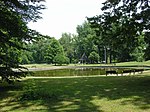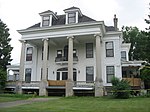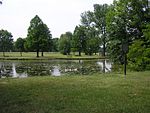R. Gallagher Generating Station
The R. Gallagher Generating Station was a four-unit coal-burning power plant located along the Ohio River some two miles (3 km) downstream from New Albany, Indiana in southernmost Floyd County, Indiana. The total aggregate capacity (year-around) of the plant's four identical units was 560MW. Unit 2 began operating in 1958; unit 1 in 1959; unit 3 in 1960 and unit 4 in 1961. In early 2012, both Units 1 and 3 were retired. Units 2 and 4 continued to operate because Duke Energy installed baghouses, greatly reducing the pollution and meeting the current standards set by the EPA. The plant's 2012 output was 280 megawatts (each unit is rated at 140 megawatts). The plant is connected to the grid by 138 and 230 kilovolt transmission lines.
Excerpt from the Wikipedia article R. Gallagher Generating Station (License: CC BY-SA 3.0, Authors).R. Gallagher Generating Station
Galiger Station Road,
Geographical coordinates (GPS) Address Nearby Places Show on map
Geographical coordinates (GPS)
| Latitude | Longitude |
|---|---|
| N 38.263611111111 ° | E -85.837777777778 ° |
Address
Galiger Station Road
47150
Indiana, United States
Open on Google Maps






